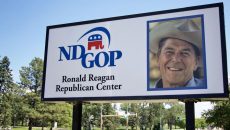What a Miserable Week for American Journalism

American journalists are fond of blaming the politicians, and these days President Donald “fake news” Trump in particular, for declining public trust in journalistic institutions.
This last week, though, the journalists really had nobody to blame but themselves.
It started last week with Buzzfeed promoting a story, based on anonymous sources, which purported that President Trump suborned perjury from his former attorney Michael Cohen. I was immediately skeptical when I saw one of the co-authors of the story was Jason Leopold who, once upon a time in 2006, reported that an indictment of Karl Rove was imminent in the Valerie Plame scandal.
The indictment never happened. Leopold was disgraced. Now we’re supposed to take his word that Trump told Cohen to lie? Something no other media outlet, to date, has been able to confirm independently? Something special prosecutor Robert Muller’s team has denied, on the record, is true?
Yet the Buzzfeed report wasn’t treated skeptically by most of the news media. Instead they embraced it, skipping over any real effort to confirm the story to speculation about when Trump might be impeached, confirming what many (including this observer) believe which is that ideological bias in newsrooms is so pervasive journalists will eschew the basic responsibilities of their profession when a story fits their preferred narrative.
The Buzzfeed report still hasn’t been confirmed, and now the reporters behind the story are giving conflicting accounts of its provenance.
But speaking of narratives, the national press corps decided to follow up on the Buzzfeed debacle with a story about a bunch of white Catholic school boys in Trump paraphernalia harassing Native Americans and other minorities after the March for Life rally in Washington D.C.
(You might be forgiven if you didn’t know the March for Life happened this weekend, it doesn’t get a lot of coverage from the national press.)
The original reporting was based on a few short clips distributed on social media, prompting outrage generally and harassment campaigns for the students and their school specifically.
Only when more complete videos of the incident emerged we find that the original narrative just wasn’t accurate, as even the New York Times is admitting in both an editorial note on their original story and a new story:
A fuller and more complicated picture emerged on Sunday of the videotaped encounter between a Native American man and a throng of high school boys wearing “Make America Great Again” gear outside the Lincoln Memorial in Washington.
Interviews and additional video footage suggest that an explosive convergence of race, religion and ideological beliefs — against a national backdrop of political tension — set the stage for the viral moment. Early video excerpts from the encounter obscured the larger context, inflaming outrage.
One might argue that sensational reporting from news outlets like the Times based on incomplete information helped the mentioned “outrage” along.
Reason writer Robby Soave watched hours of video of the incident, and found that while a few of the teenagers involved behaved like teenagers (one of them appears to do a tomahawk chop at one point, which is totally inappropriate), the people who really look bad are the adults:
Phillips put himself between the teens and the black nationalists, chanting and drumming as he marched straight into the middle of the group of young people. What followed was several minutes of confusion: The teens couldn’t quite decide whether Phillips was on their side or not, but tentatively joined in his chanting. It’s not at all clear this was intended as an act of mockery rather than solidarity.
He continues:
At the 1:20 mark (which comes after the Phillips incident) they call one of the few black students the n-word and tell him that his friends are going to murder him and steal his organs. At the 1:25 mark, they complain that “you give [a slur for gays], rights,” which prompted booing from the students. Throughout the video they threaten the kids with violence, and attempt to goad them into attacking first. The students resisted these taunts admirably: They laughed at the hecklers, and they perform a few of their school’s sports cheers.
He would later tell The Detroit Free Press that the teenagers “were in the process of attacking these four black individuals” and he decided to attempt to de-escalate the situation. He seems profoundly mistaken: The video footage taken by the black nationalists shows no evidence the white teenagers had any intention of attacking. Nevertheless, Phillips characterized the kids as “beasts” and the hate-group members as “their prey”.
This is a very different picture than what Americans were delivered by the national media. And, frankly, even local media.
There were plenty of hard questions to be asked about the Buzzfeed report, and the incident with the Catholic school students, but far too few people working in the nation’s newsrooms were willing to ask them.
The journalism industry should be asking itself why.




